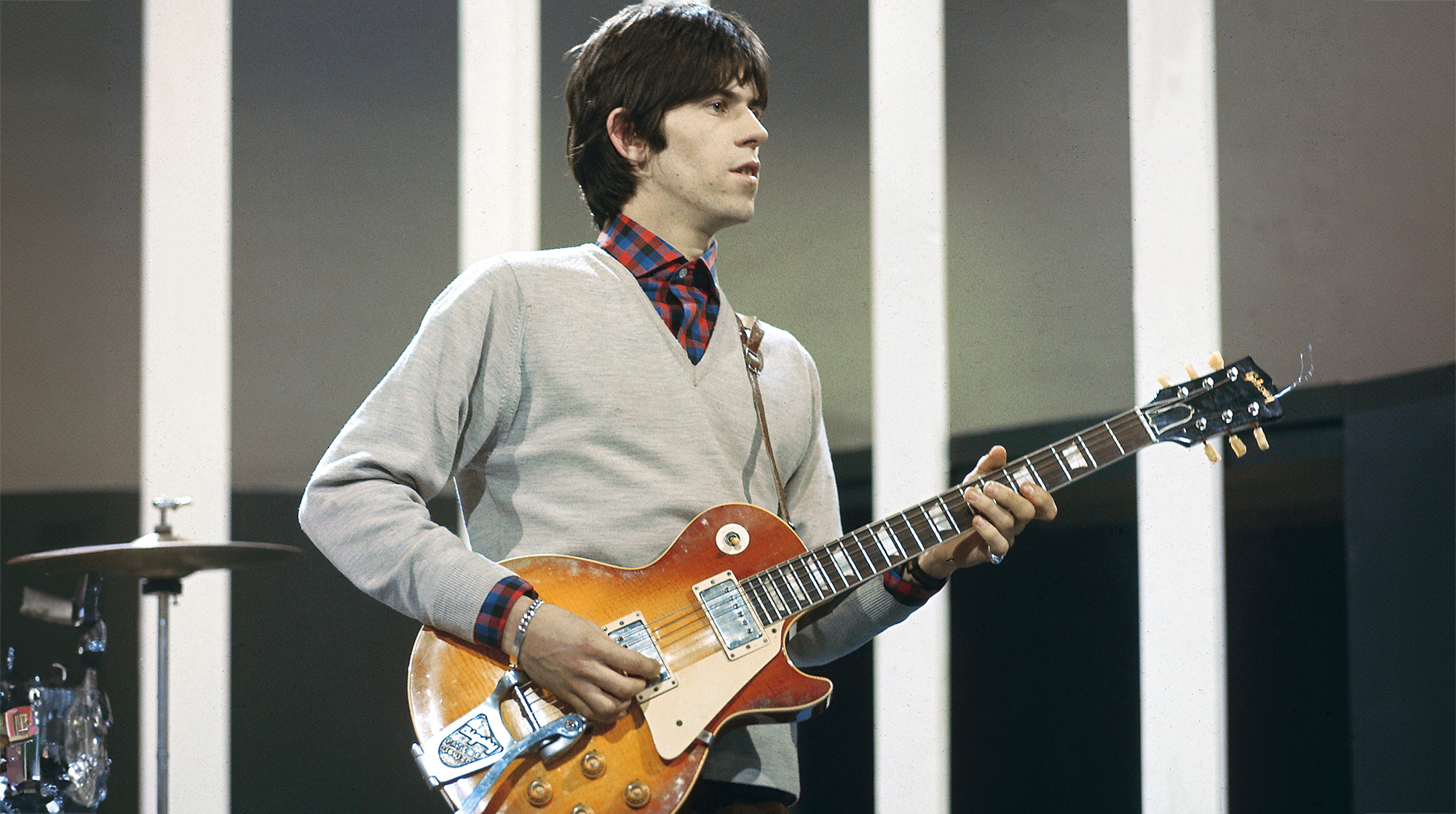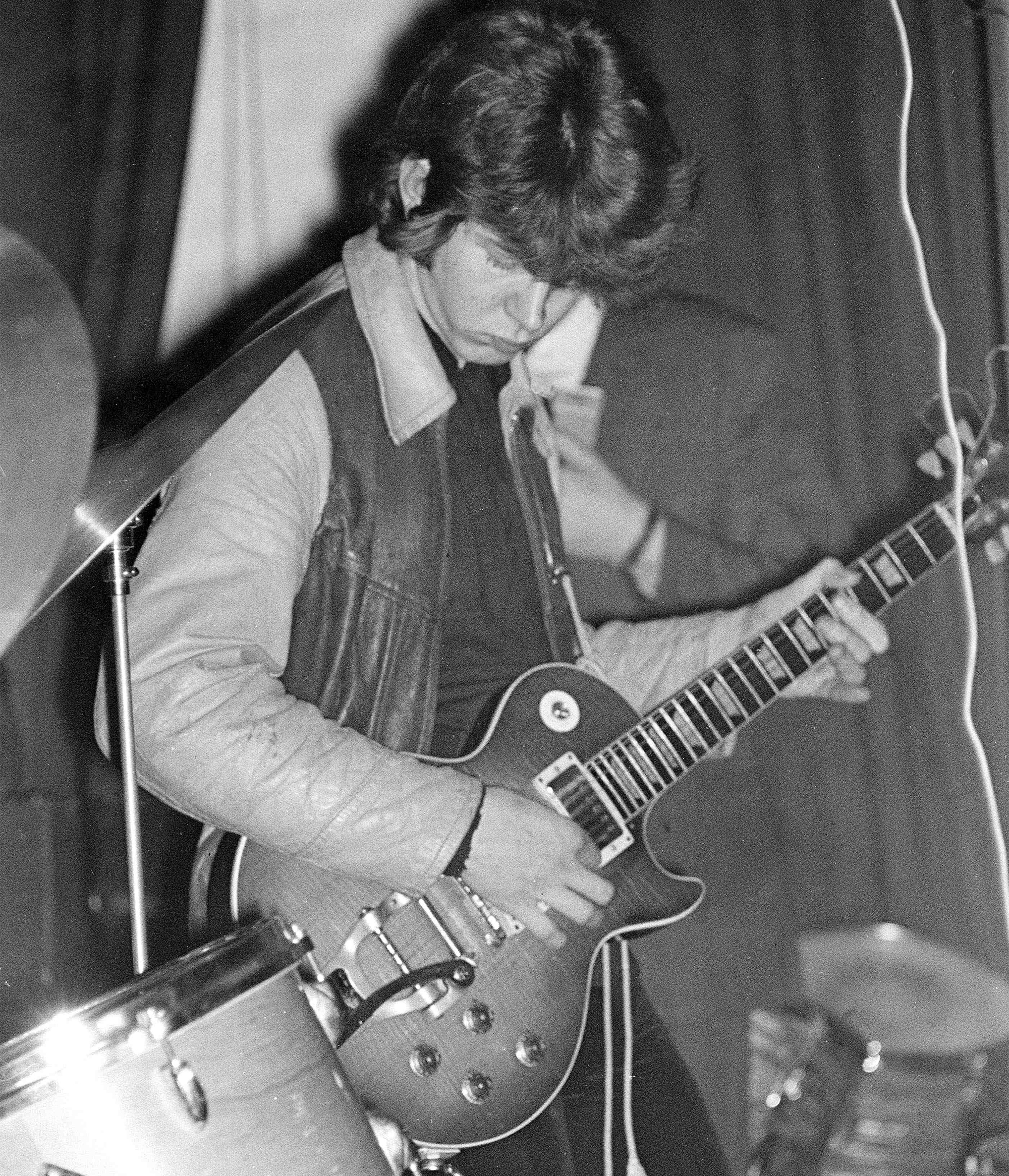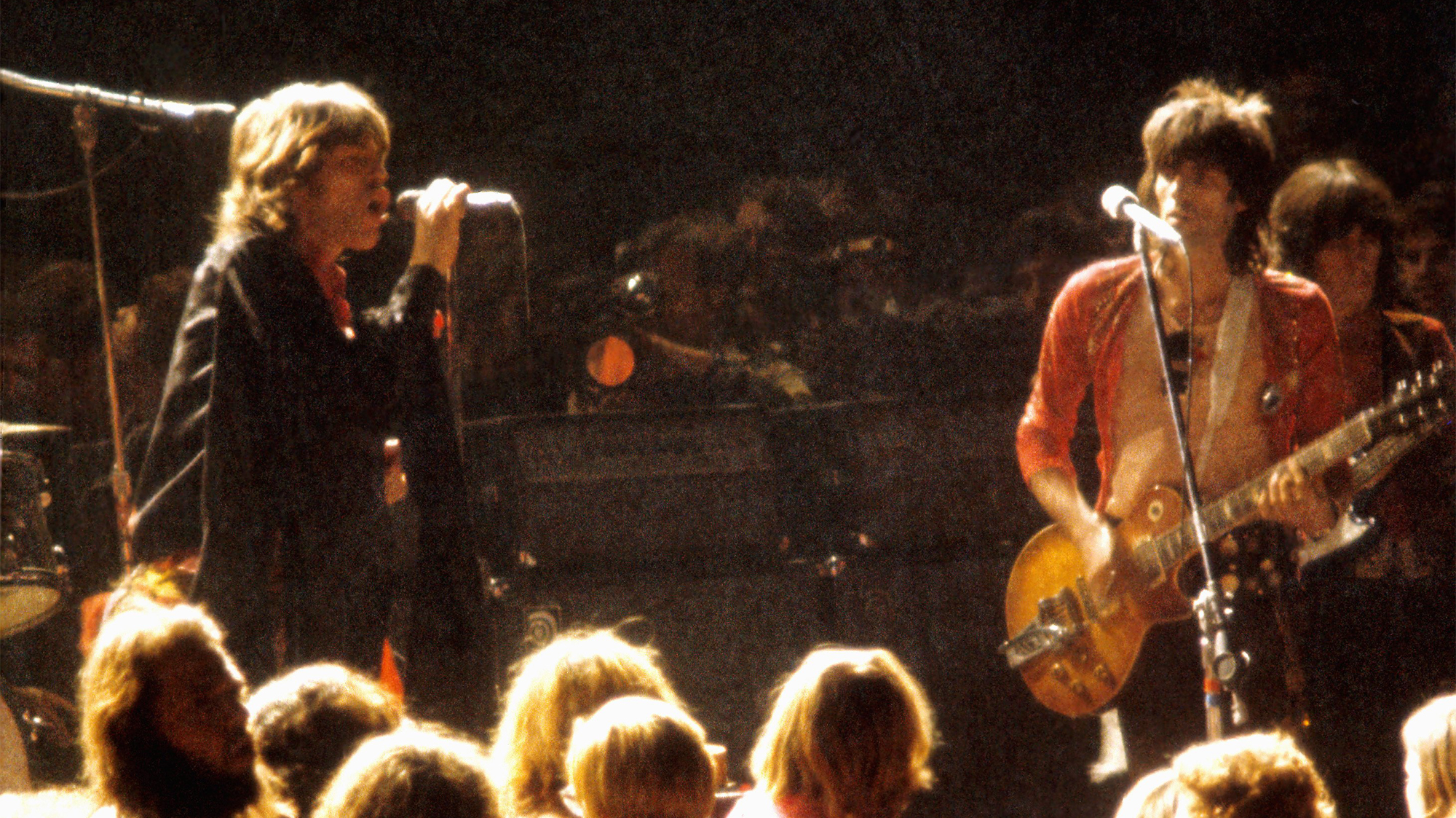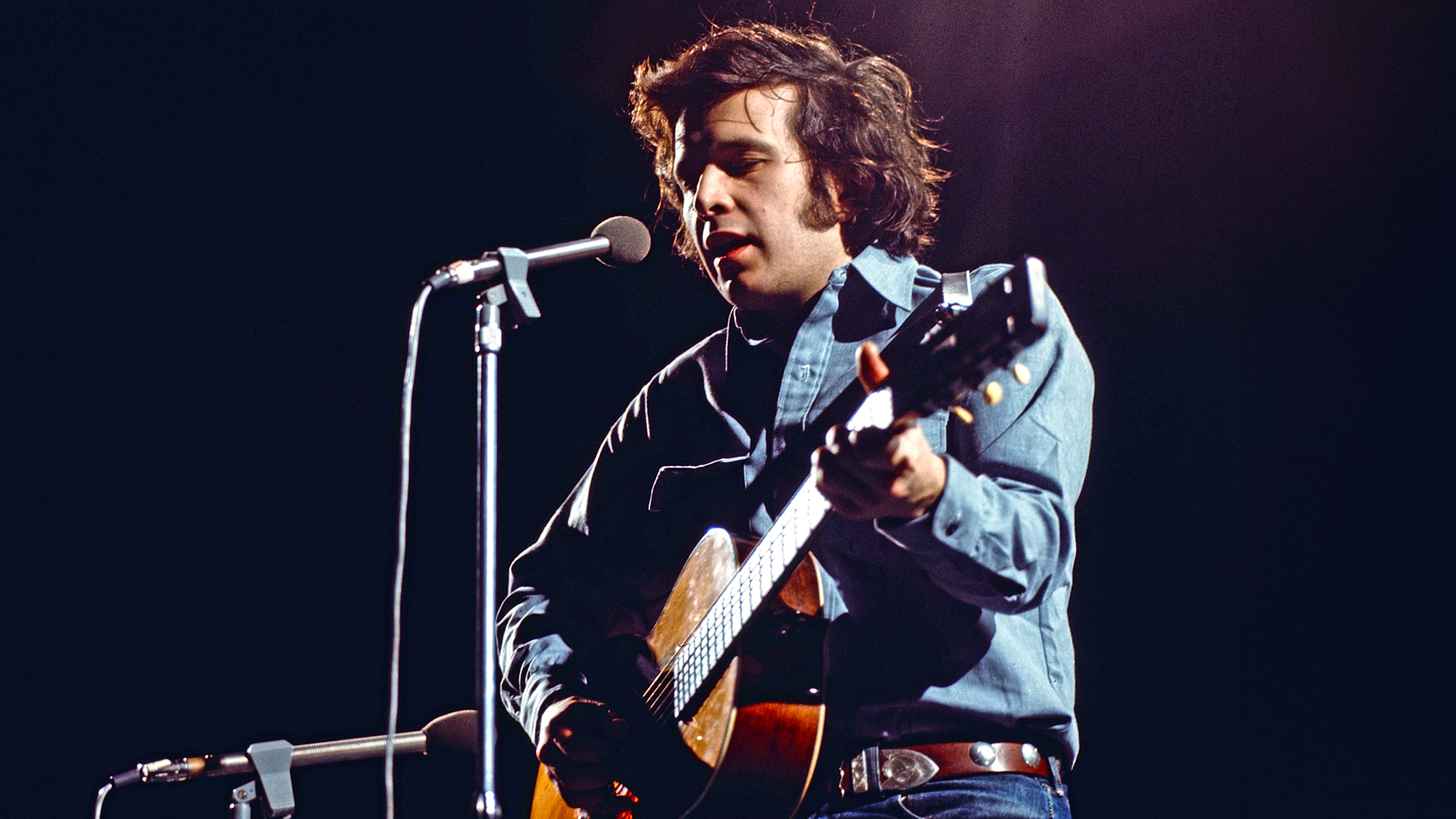“He is mystified as to how his property found its way into the Met’s collection.” Keith Richards, Mick Taylor, Eric Clapton and Jimmy Page played this stolen 1959 Les Paul. Now it’s turned up in the collection of a famous museum
The guitar, which appeared on the Stones' 1964 Ed Sullivan Show appearance, was stolen during the making of 1972's 'Exile on Main St.'

A 1959 Gibson Les Paul Standard stolen from former Rolling Stone Mick Taylor in 1972 has finally turned up — in New York City’s Metropolitan Museum of Art.
The guitar, which Taylor purchased from Stones guitarist Keith Richards, was used on the group’s 1972 album, Exile on Main St., and was among a number of instruments stolen near the end of the album’s sessions.
It was included in the more than 500 guitars from the golden age of American guitarmaking given to the Met earlier this year in what the museum called a “landmark gift.”
The 1959 sunburst Les Paul, which featured an aftermarket Bigsby tailpiece, was originally played by Richards, who used it during the Rolling Stones’ first appearance on The Ed Sullivan Show, in 1964. He sold it to Taylor in 1967, when the then 18-year-old guitarist was joining John Mayall’s Bluesbreakers as a replacement for Peter Green, who left to form Fleetwood Mac with former Bluesbreakers John McVie and Mick Fleetwood.
Taylor joined the Stones in 1969 following the group’s firing of founding member Brian Jones. The 1959 Les Paul was among the electric guitars used on their celebrated 1969 tour of America, captured on the 1970 album Get Yer Ya-Ya’s Out, where it was played by Richards; Taylor played his 1958 Les Paul Standard.

By the middle of 1971, the Stones were living in France as tax exiles, in a rented villa named Nellcôte, where they recorded Exile on Main St. The 1959 Les Paul was once again on hand for those sessions and was among the instruments stolen from the house one day. The theft was reportedly carried out by drug dealers from Marseille after Richards failed to reimburse them for the heroin he and others were consuming during their stay.
Friends and visitors were able to freely come and go at Nellcôte at any hour of the day, making it easy for thieves to slip into the house. The crime was said to have taken place in broad daylight while the villa’s occupants were watching TV.
All the latest guitar news, interviews, lessons, reviews, deals and more, direct to your inbox!
“That’s how loose and stupid it was out there,” former Rolling Stones bassist Bill Wyman said of Nellcôte.
In addition to Taylor’s Les Paul, the robbers took numerous guitars belonging to Richards, a bass guitar belonging to Wyman and a saxophone owned by Bobby Keys, a session player who appeared on numerous Stones recordings.
The New York Post first reported on the discovery of Taylor’s guitar in the Met’s collection. The outlet said Taylor’s business manager and partner, Marlies Damming, confirms the Les Paul is the one Richards sold to Taylor. A source told The Post, “Taylor says he never received compensation for the theft and is mystified as to how his property found its way into the Met’s collection.”
The Post said a rep for the Met did not immediately provide a comment, nor did it hear back from Dirk Ziff, the collector who made the donation.
Dark figuring near the cutaway along the edge of the top’s lower bout, visible in photos, is a key to the guitar's identity.
Typical of guitars with clear or stained finishes, the Les Paul's unique woodgrain pattern acts as a fingerprint. In the case of this particular example, dark figuring near the cutaway, along the edge of the top’s lower bout, is a key to its identity.
Beyond its association with Richards and Taylor, the guitar has a storied history. Before Richards sold it in 1967, the Les Paul was played by Jimmy Page, who was photographed with it at a recording session for Stones manager/producer Andrew Loog Oldham.
In 1966, Eric Clapton borrowed it for a July 31 show with his new group Cream after his own Les Paul — heard on the Blues Breakers With Eric Clapton album — was stolen from a church hall where the group had been rehearsing..
In addition to its use on Rolling Stones albums, the 1959 Les Paul made an appearance during the group's infamous performance at the Altamont Free Concert in Tracy, California, on December 6, 1969. The show was plagued by violence perpetrated by the Hells Angels, resulting in the murder of concertgoer Meredith Hunter.

Mick Taylor left the Rolling Stones in 1975 and was replaced by Ronnie Wood, the third guitarist to play opposite Richards in the band.
Richards has commented on the comfort he feels performing with Wood, likening it to the interplay he enjoyed with founding guitarist Jones, where each player could easily move between rhythm and lead without much thought. Richards told Guitar Player in 1983 that while Taylor was a talented guitarist, he never connected with him in the same way.
“It was much harder to get a Rolling Stones sound with Mick Taylor,” he explained. “It was much more lead and rhythm, one way or the other. As fabulous as he is as a lead guitarist, he wasn't as great as a rhythm player. So we ended up taking roles.
“When Brian and I started, it was never like that. It's much easier than with Brian, personally, but also with Ron, the basic way we play is much more similar.
“And this isn't in any way to knock Mick. I mean, he's a fantastic guitar player. Even if he couldn't play shit, I'd love the guy. But chemically we didn't have that flexibility in the band. It was, ‘You do this, and I'll do that, and never the twain shall meet.’”
Taylor’s Les Paul is among just a few stolen guitars to resurface years after they disappeared. In 2021, an internet sleuth helped Randy Bachman find his Gretsch 6120 — famously used on Guess Who tracks like “Undun” and Bachman-Turner Overdrive hits like “Takin' Care of Business” — which had been stolen in 1976. Paul McCartney’s first Höfner bass was recovered in 2024 more than 50 years after it disappeared from a van parked in London’s Notting Hill neighborhood.
Christopher Scapelliti is editor-in-chief of GuitarPlayer.com and the former editor of Guitar Player, the world’s longest-running guitar magazine, founded in 1967. In his extensive career, he has authored in-depth interviews with such guitarists as Pete Townshend, Slash, Billy Corgan, Jack White, Elvis Costello and Todd Rundgren, and audio professionals including Beatles engineers Geoff Emerick and Ken Scott. He is the co-author of Guitar Aficionado: The Collections: The Most Famous, Rare, and Valuable Guitars in the World, a founding editor of Guitar Aficionado magazine, and a former editor with Guitar World, Guitar for the Practicing Musician and Maximum Guitar. Apart from guitars, he maintains a collection of more than 30 vintage analog synthesizers.
